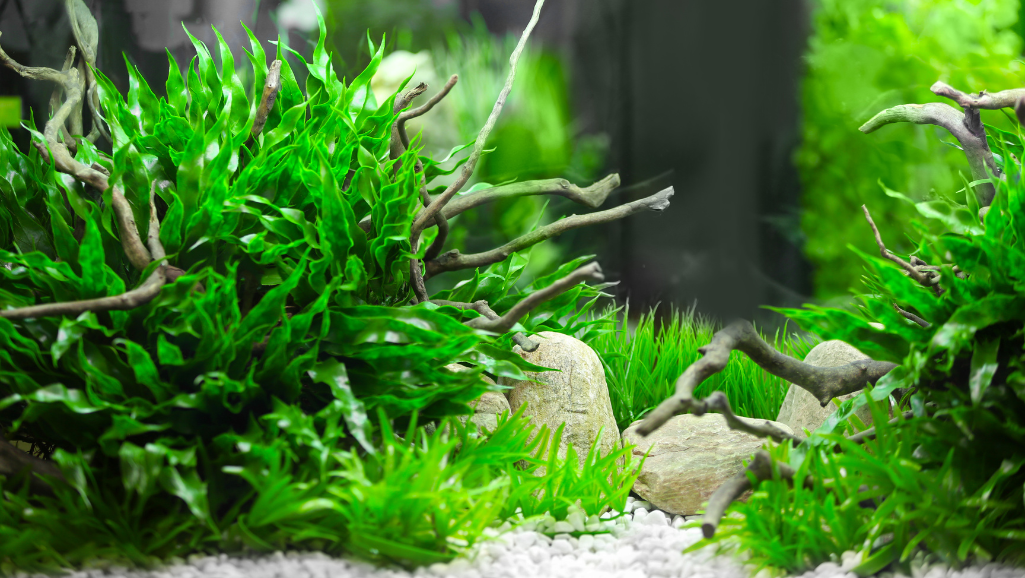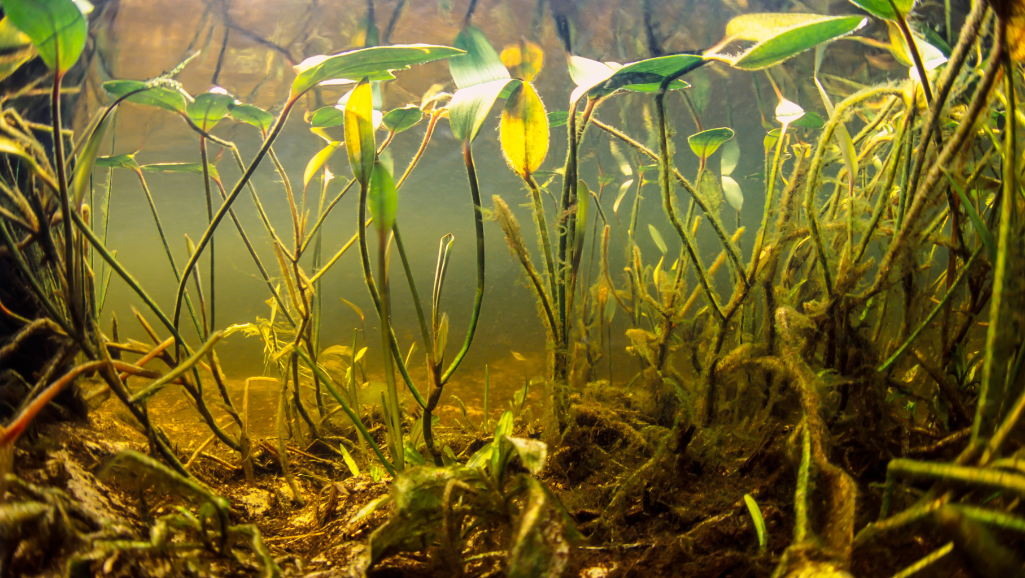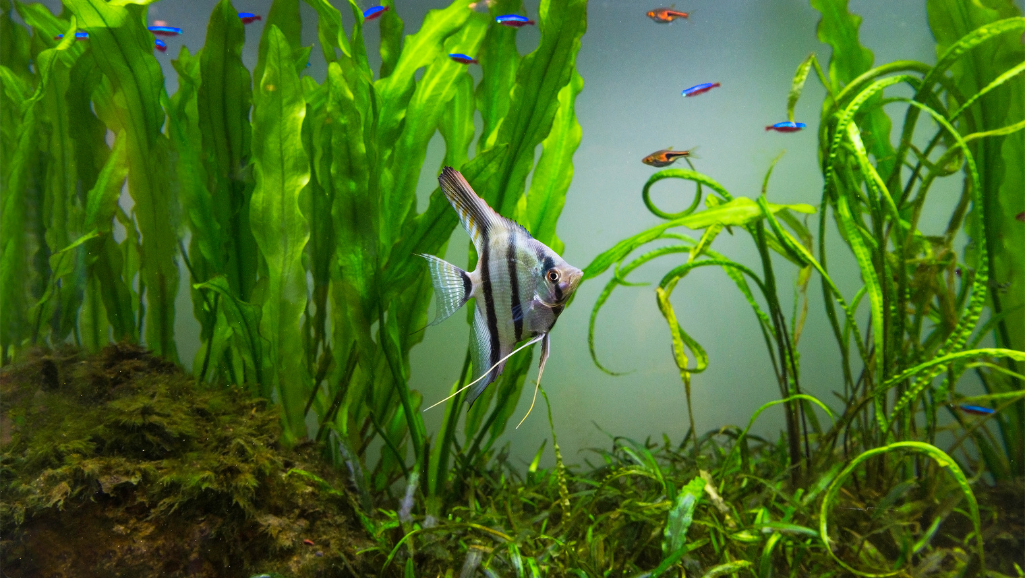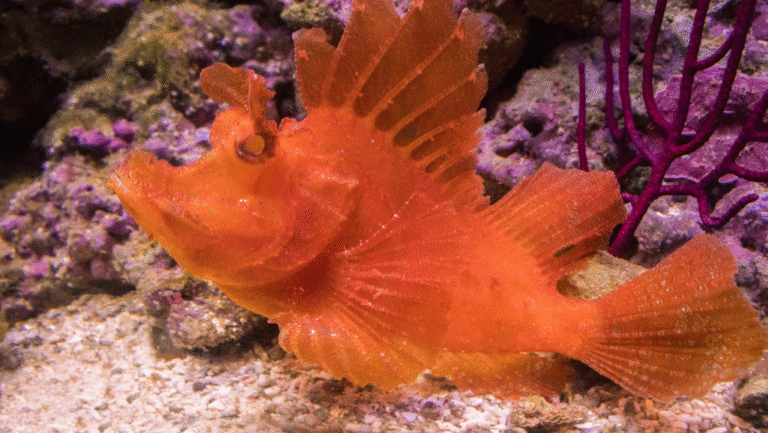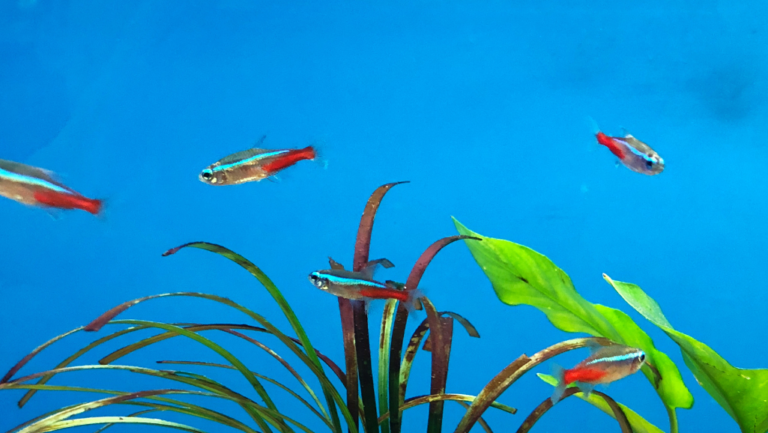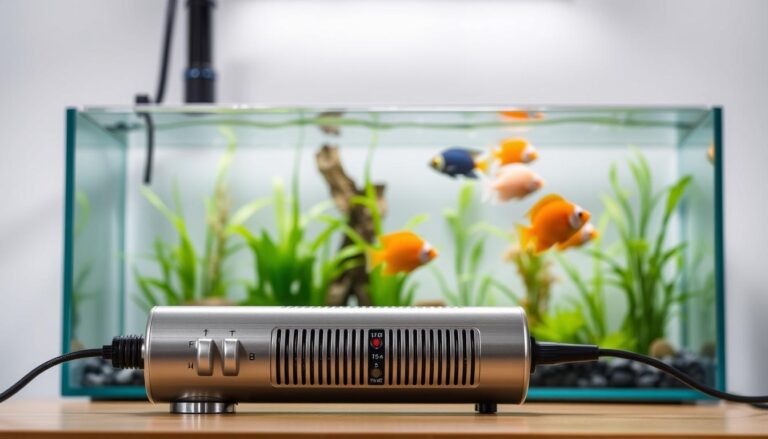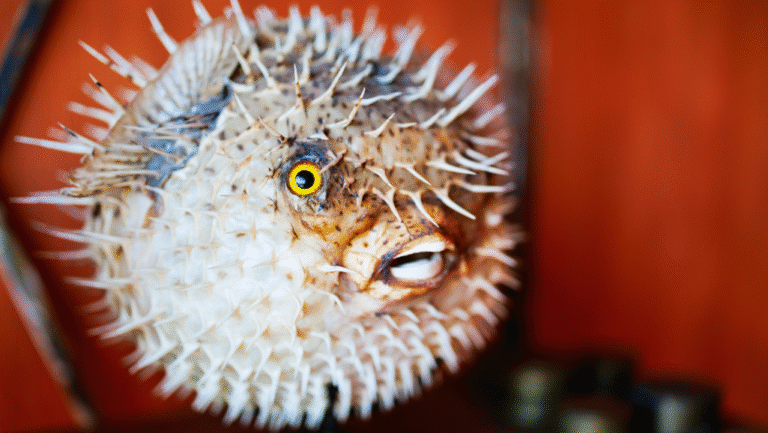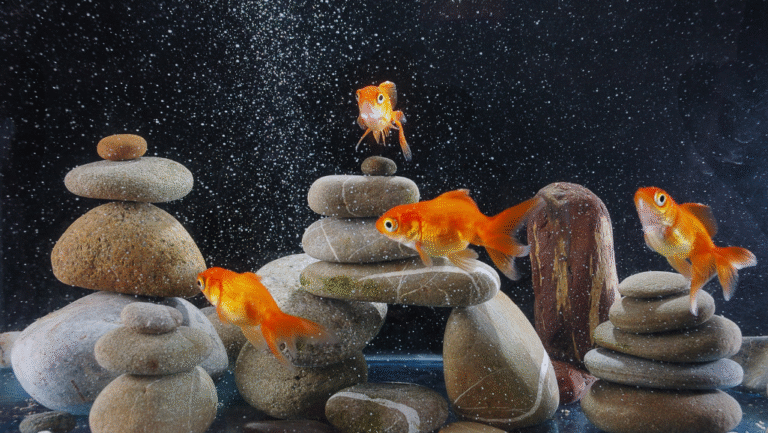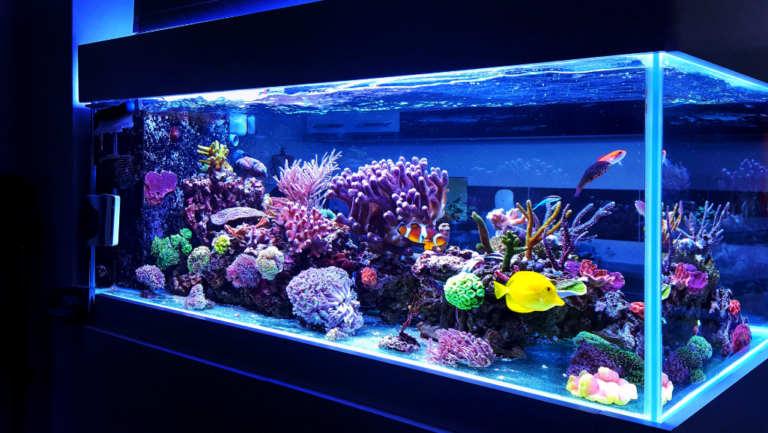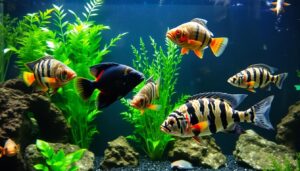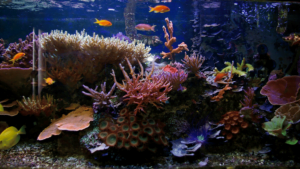Adding live flora to your freshwater setup can transform it into a vibrant, thriving ecosystem. Potted aquarium plants not only enhance the visual appeal but also improve water quality and provide shelter for aquatic life. With over 243 species available, choosing the right ones can make all the difference.
When selecting these plants, consider factors like lighting, substrate, and nutrient needs. Popular choices such as Amazon Sword, Java Fern, and Anubias offer versatility and beauty. Each species has unique care requirements, so consulting individual guides is essential for success.
Proper care involves managing lighting, nutrients, and regular maintenance. Beginners often face challenges like algae overgrowth or yellowing leaves, but these can be resolved with the right adjustments. For more tips on creating a balanced ecosystem, check out this guide on plants good for fish.
Key Takeaways
- Live flora enhances tank aesthetics and water quality.
- Proper selection ensures healthy growth and tank balance.
- Lighting, substrate, and nutrients are critical care factors.
- Popular species include Amazon Sword, Java Fern, and Anubias.
- Consult individual care guides for specific plant needs.
Choosing the Best Potted Aquarium Plants for Your Tank
Selecting the right flora for your freshwater tank ensures a balanced and visually appealing environment. Whether you’re a beginner or an experienced hobbyist, understanding the different types of greenery and their care requirements is essential. Let’s explore the best options for your setup.
Rhizome Plants: Anubias and Java Fern
Anubias is a hardy choice that thrives in low to mid-level lighting. Its rhizomes should be glued to decor like rocks or driftwood, avoiding substrate burial. This prevents rot and promotes healthy growth.
Java Fern is another low-maintenance option. It tolerates low light and can be attached to hardscape using thread or glue. Its unique propagation method, where new plants grow from its leaves, makes it a favorite among hobbyists.
Rosette Plants: Swords and Cryptocoryne
Amazon Sword (Echinodorus bleheri) is a popular rosette plant that adds height to your tank. It requires nutrient-rich conditions and benefits from root tabs for optimal growth. Place it in the background for a striking effect.
Cryptocoryne species, like Cryptocoryne wendtii, are versatile but may experience “crypt melting” under stress. Plant them at the right depth to protect their crowns, and they’ll recover once conditions stabilize.
Carpeting Plants: Monte Carlo and Dwarf Baby Tears
Monte Carlo (Micranthemum tweediei) is ideal for creating lush carpets. It performs best with CO2 injection and moderate lighting. Rock wool plugs help stabilize its roots during planting.
Dwarf Baby Tears (Hemianthus callitrichoides) is known for its tiny leaves and dense growth. While it requires high light and CO2, its delicate roots need careful handling to avoid damage.
For more tips on selecting the right greenery, check out this guide on choosing aquarium plants. Proper placement and care ensure your tank remains vibrant and healthy.
How to Plant Potted Aquarium Plants Correctly
Properly planting your greenery ensures they thrive and enhance your underwater environment. Whether you’re working with stem, rhizome, or bulb species, the right techniques make all the difference. Let’s dive into the details to help you get started.
Removing Pots and Rock Wool Safely
Start by gently squeezing the pots to loosen the plant and rock wool. Use your fingers, a fork, or tweezers to carefully strip away the rock wool without damaging the root system. Be sure to remove any small fertilizer balls to prevent nutrient spikes in your tank.
For overgrown specimens, trim the roots by about one-quarter to encourage healthy growth. This step is especially important for species like Amazon Sword or Cryptocoryne, which rely on a strong root network.
Planting Techniques for Different Root Systems
Stem plants, such as Monte Carlo, need to be buried 2-3 inches deep in the substrate. Strip a few leaves from the lower nodes to promote new root growth. For rhizome species like Anubias, attach them to hardscape using thread or glue, ensuring the rhizome remains above the substrate.
Bulb plants, like banana plants, should be placed on the substrate with the bulb halfway submerged. If no growth appears after a few weeks, try turning the bulb to encourage sprouting.
Using Easy Planters for Stability
In fish-heavy tanks, Easy Planters are a game-changer. These tools prevent uprooting and provide stability for your greenery. Simply place the plant in the planter and secure it in the substrate. This method works well for species prone to floating or those with delicate roots.
By following these steps, you’ll create a thriving environment for your aquatic flora. Proper planting ensures they grow strong and contribute to a balanced ecosystem.
Essential Care Tips for Thriving Aquatic Plants
Maintaining a healthy aquatic environment requires attention to lighting and nutrient balance. These factors directly impact the growth and vibrancy of your greenery. Whether you’re a beginner or an experienced hobbyist, understanding these essentials ensures your tank remains a thriving ecosystem.
Lighting Requirements for Optimal Growth
Light is crucial for photosynthesis, the process that fuels plant growth. Different species have varying light needs, so it’s important to match your setup accordingly. For example, low-light species like Anubias thrive under minimal lighting, while carpeting plants like Monte Carlo require high-intensity light.
When choosing lighting, consider PAR (Photosynthetically Active Radiation) values. Full-spectrum LED lights are a popular choice due to their energy efficiency and ability to support diverse species. Fluorescent lights are also effective but may require more frequent replacement.
Light duration is another key factor. Aim for 8-10 hours daily to mimic natural conditions. Too much light can lead to algae overgrowth, while insufficient light stunts plant development.
Nutrient Supplements: Root Tabs vs. Liquid Fertilizers
Nutrients are essential for healthy root systems and vibrant foliage. Sword plants, for instance, benefit from root tabs placed directly in the substrate. These tabs slowly release nutrients, ensuring steady growth.
Liquid fertilizers, on the other hand, are ideal for species that absorb nutrients through their leaves. Rhizome plants like Java Fern respond well to liquid supplements. For comprehensive care, some setups may require both types of fertilizers.
Balancing nutrients is critical to prevent algae. Over-fertilization can harm your greenery and disrupt water quality. Regularly monitor water parameters and adjust feeding routines based on plant biomass.
- Use root tabs for species with extensive root systems.
- Liquid fertilizers are ideal for leaf-absorbing plants.
- Monitor water parameters to avoid nutrient imbalances.
- Schedule fertilization routines based on plant needs.
For high-tech setups, CO2 injection can significantly enhance plant growth. However, this requires careful monitoring to maintain balance. With the right care, your aquatic greenery will flourish, creating a stunning and healthy environment.
Troubleshooting Common Potted Plant Problems
Keeping your freshwater setup healthy involves addressing common issues that can arise with your greenery. From yellowing leaves to floating overgrowth, understanding these problems ensures your tank remains vibrant.
Yellowing leaves often indicate nutrient deficiencies. Nitrogen deficiency causes older leaves to turn yellow, while iron deficiency affects new growth. Use specific fertilizers to address these issues. For example, a nitrogen supplement can restore balance, while iron-rich formulas enhance new leaf development.
Pinholes in leaves are a sign of potassium deficiency. These tiny spots can spread if untreated. Adding a potassium supplement like Easy Potassium resolves the issue and promotes healthy growth.
Crypt melt is a common challenge when transitioning plants from emersed to submerged growth. Patience is key. Regular water changes and stable conditions help plants recover. Remove dead leaves to encourage new growth.
For stem plants, etiolation (stretched stems) occurs due to insufficient light. Adjust lighting to 7-8 hours daily for optimal results. This ensures plants grow compact and healthy.
pH fluctuations can limit nutrient uptake. High pH and hard water are common culprits. Softening water and maintaining proper pH levels ensures your greenery absorbs nutrients effectively.
For more details on diagnosing and treating deficiencies, check out this guide on common plant deficiency symptoms. Addressing these issues promptly keeps your setup thriving.
Conclusion
Creating a thriving underwater environment starts with the right choices. When selecting flora for your freshwater setup, prioritize hardy species like Java Fern and Amazon Sword. These options are ideal for beginners and provide a strong background for your tank.
Avoid common mistakes like over-fertilizing or planting too densely. Gradual planting ensures better acclimatization, especially for tissue culture varieties. Curated collections, such as Java Fern bundles, offer a balanced and visually appealing solution.
Long-term maintenance is easier with robust species that adapt well to their environment. Remember, plants may take time to transition, with initial leaf die-off before new growth appears. Patience is key to a healthy ecosystem.
For more detailed care tips, download our free guide. Whether you’re a beginner or an experienced hobbyist, the right selection and care will transform your tank into a vibrant, thriving habitat.

